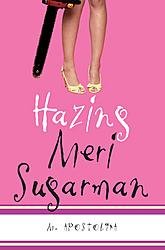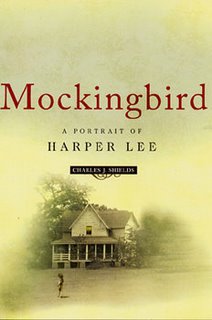Blue Bloods by Melissa de la Cruz

I began reading Melissa de la Cruz's earlier book, Fresh Off the Boat, last year and quite honestly couldn't finish it because I felt the writing was so poor. When I first saw Blue Bloods, I was really excited - I love vampire books, and the idea that the blue bloods of New York society might actually be vampires, descended from the Mayflower's passengers, sounded really promising. It sounded a little reminiscent of Scott Westerfeld's Peeps, which I loved. However, when I saw who wrote it , I was prepared to be diappointed. In fact, I thought about not reading it at all.
But I did, and I'm glad I did. The writing was still bad, but the story was good enough that I had to finish it. It was disappointing - I can't help but wonder what the story could have been in the hands of a better writer. Some things, like the vampires' life cycles, aren't explained very well, and most disturbing to me was de la Cruz's tampering with history. In her version, Captain Myles Standish became governor of Plymouth in 1622 for 31 consecutive one-year terms. William Bradford was actually Plymouth's governor beginning in 1621, and remained governor for over 30 years. De la Cruz also has Standish leading party of male Mayflower vampires to look for their fellow creatures at Roanoke in December 1620; the colony of Roanoke had been found abandoned as early as 1590. The Pilgrim settlers would have known of it's demise and had no need to undertake such an expedition 30 years later.
Adjusting history to fit a story is one thing, but not including a note explaining the alterations is much worse, in my opinion. De la Cruz, in her very. very brief note on the text, mentions the "true story" of Roanoke's disappearance in 1590, but does not point out that she altered the date or explain why she did so. She doesn't take responsibility for her misrepresentation of history, and young readers may take her altered version as fact.
Still, the story itself is actually good and is an interesting take on the typical vampire legends. De la Cruz's blue blooded vampires were cast out of Heaven, forced to live as immortals on earth, reincarnation every 100 years and carrying centuries of memories with them. New York high society is run by vampires, and the blood of the student body of the exclusive Duquesne School runs very blue. Schuyler, Bliss and several others are about to to discover their heritage; a new generation of vampires is coming of age (again), but their immortality is threatened by a predator from their past.
This one will definitely appeal to teens, and most won't share my complaints, I'm sure. However, there are definietly better vampire books out there - steer the kids toward Twilight by Stephenier Meyer or The Silver Kiss by Annette Curtis Klause instead.
What I'm Reading: A Brief Chapter in My Impossible Life
On My Bookshelf: Spacer and Rat; Nothing But the Truth









